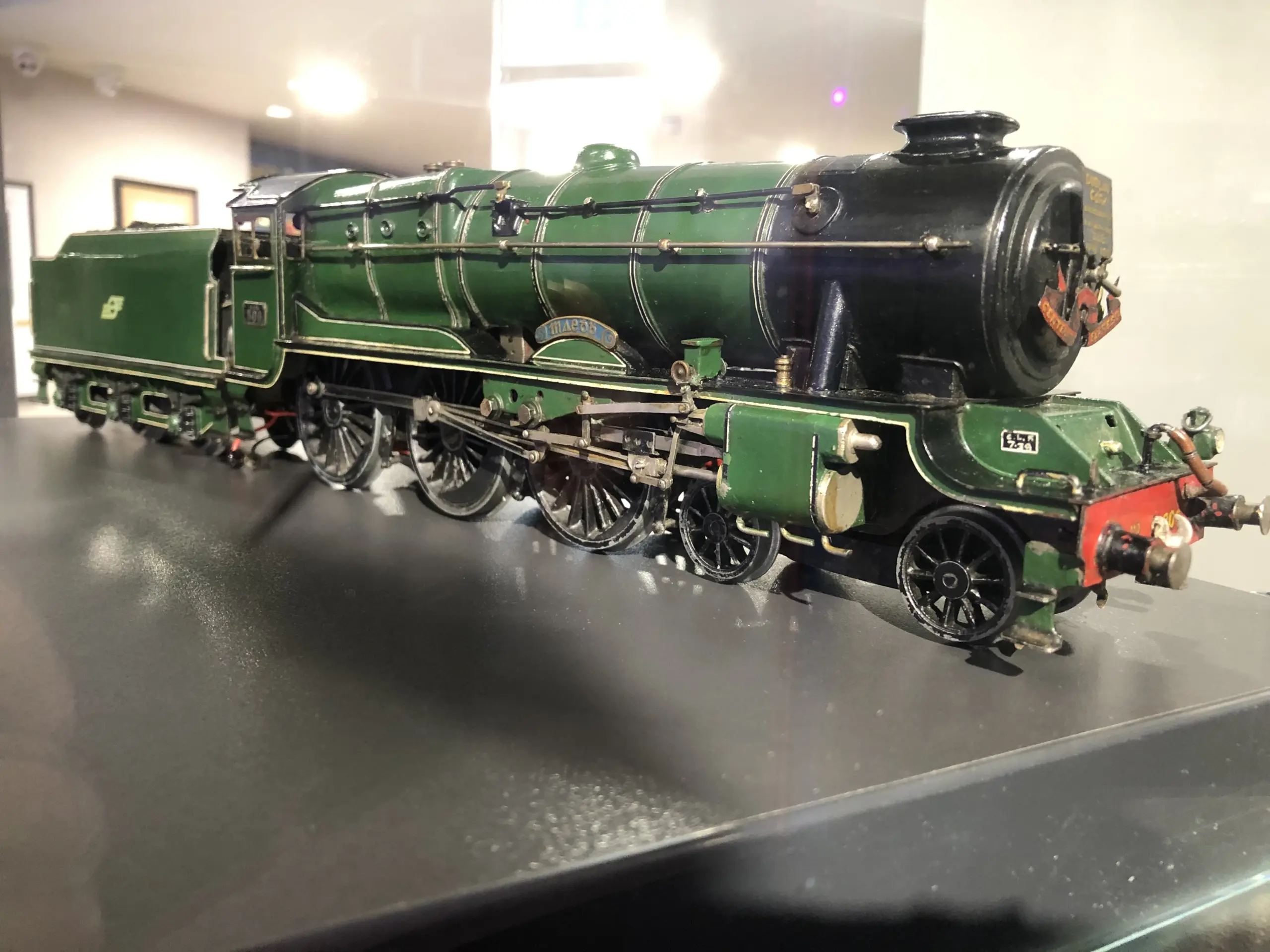Welcome to the Malahide Model Railway Museum, situated in the picturesque and historic Casino Building in Malahide.
Cyril Laurence Fry (1905-1972) was the first son of Sydney Fry and Emilie Mabel. As a young boy he became fascinated by the trains that ran past the rear of their house in Dundrum.
At 10 years old, Cyril was sent to boarding school in England, where his passion grew. He even helped start a model railway club at his school. At 17 he became an apprentice and went on to become an railway engineer in Dublin.
Throughout his working career, Fry spent his spare time building over 350 precision-made models and created an elaborate attic layout on which to display them. This complex layout included signal lights and level crossing barriers, which all worked automatically. He often worked from original plans and drawings from the railway companies to get the exact details and scale. All of the individual details, such as wheels and doors, were made with their own mould, which was then filled with hot metal. Once the pieces had cooled, they were filed into shape on a lathe and then hand-painted with a brush so fine that Fry could add his name to each model.
He had set himself the task of making a model of as many as possible of the many different types of trains that operated in Ireland in those times. Unlike today, there was no real standardisation, and many locomotives, coaches and goods wagons were one-offs, or were perhaps one of only half a dozen similar. To make a model of all of them, would therefore be a lifetime commitment.
Even the railway network operated over two different track gauges, with the main one being of 1600mm (5ft 3ins) gauge, but including some fourteen separate lines with a 914mm (3ft) track gauge.
Despite this, by the time of Fry’s death he had managed to cover a lot of rare types of locomotives and rolling stock. Amongst these, he recreated Ireland’s biggest, fastest and strongest steam locomotives, the iconic B1a or 800 class of the Great Southern Railways. His model of No. 800, named “Maedb”, stands in the revolving display case inside the Casino, with the nameplate for all three of the class of the wall behind it. He covered the diminutive diesel-powered railcars which started operating on the Donegal narrow-gauge system in 1931, which were possibly the first diesel-powered passenger-carrying railway vehicles in the world. Despite having only lasted until 1924, he managed to built a highly accurate scale model of the former, and unique, Listowel to Ballybunion steam-operated monorail railway in Co. Kerry.
Cyril Fry made extensive use of contacts he had built up when working in Inchicore Works as a railway engineer in Dublin. As a result, he had access to the design office, and built several models “off plan”, even before the real thing was produced! Amongst these was his model of the Drumm Battery Train, an Irish invention a full ce4ntury ahead of its time – a rechargeable battery-operated commuter train which operated between the late 1930s and the early 1950s between Dublin and Bray.
He did not, of course, forget the main lines, and has examples of steam locomotives, mail coaches, passenger coaches and luggage vans which traversed the main lines from Dublin to Belfast, Belfast to Derry, Dublin to Galway and Sligo, and Dublin to Limerick, Cork and Kerry.
On leaving railway employment in Dublin he returned for a time to Liverpool, where he been at school. He worked there for some years, and as a result started building up a representative sample of many types of trains which would have been seen there too – from the Holyhead to London Mail Train of the London & North Western Railway to various one-offs from the Liverpool area too.
Trams were not forgotten either. In the Casino we can see examples of trams from all over Ireland – Dublin, Belfast, Cork, and several rural places too.
Overall, this collection is unique, and one of the most important historical model railway collections in either Ireland or Britain.
Come in, browse, and soak yourself in Ireland’s unique and very varied transport history!





